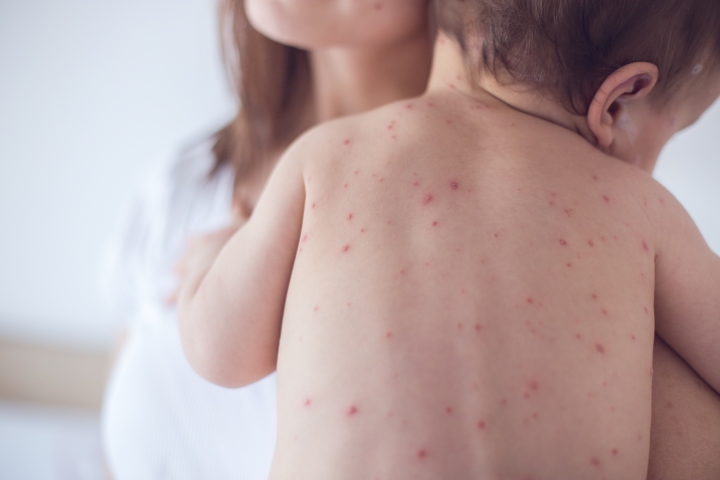As a parent, it’s important to be aware of the different types of skin infections that your child may encounter. One common skin infection that affects children is impetigo. It is caused by bacteria and is easily spread through contact with infected skin or objects. Impetigo is a highly contagious skin infection that mainly affects children between the ages of 2 and 5 years old. In this article, we’ll take a closer look at impetigo in children, including its causes, symptoms, and treatment options.
In This Article:
Symptoms Of Impetigo In Children
Blisters
The most common symptom of impetigo is the appearance of red sores or blisters on the skin. These sores can be small or large and are usually filled with yellow or honey-coloured fluid. They can be itchy and painful and may burst open, oozing fluid and forming a crust.
Red Sores
Another symptom of impetigo is the presence of sores on the skin. The skin around the sores may become red and inflamed. This is due to the body’s immune response to the bacterial infection. The redness can spread rapidly and may be accompanied by a burning or itching sensation.
Swollen Lymph Nodes
In some cases, impetigo can cause the lymph nodes near the affected area to become swollen and tender. If the infection spreads to the lymph nodes, your child’s lymph nodes may become swollen and tender. The lymph nodes are part of the body’s immune system and help fight infections.
Fever
In some cases, impetigo can cause a fever. Children with impetigo may also develop a fever, which can be a sign that the infection is spreading. This is the body’s natural response to fighting off the infection. If your child has a fever, it is important to keep them hydrated and monitor their temperature.
Fatigue
Fatigue is a common symptom of impetigo. Impetigo can make your child feel tired and fatigued. This is because the body is working hard to fight off the infection. It is important to make sure your child gets plenty of rest and stays hydrated.
Itching
Impetigo can be quite itchy, and your child may feel the need to scratch the affected area. However, scratching can cause the infection to spread to other parts of the body or to other people.
Causes Of Impetigo In Children
Bacteria
Impetigo is caused by bacteria, specifically Streptococcus pyogenes and Staphylococcus aureus. These bacteria can enter the body through a break in the skin, such as a cut, scrape, or insect bite.
Poor Hygiene
Poor personal hygiene can increase the risk of impetigo. Children who do not wash their hands regularly or do not take a bath or shower are often more susceptible to impetigo.
Close Contact With Infected Individuals
Impetigo is highly contagious and can spread easily from one person to another through close contact. Children who are in close contact with others, such as in daycare or preschool, are more likely to contract impetigo.
Warm, Humid Weather
Warm, humid weather can create the perfect environment for bacteria to thrive, making it more likely for children to develop impetigo during these conditions.
Skin Conditions
Children with skin conditions, such as eczema or dermatitis, are more likely to develop impetigo. This is because the bacteria that cause impetigo can enter the body through breaks in the skin.
Weakened Immune System
A weakened immune system can make it easier for bacteria to cause infections, including impetigo. Children who have a weakened immune system due to a medical condition or medication are more at risk.
Treatment For Impetigo In Children
Antibiotics
The first step in treating impetigo is to get antibiotics. Your doctor will prescribe either a topical or oral antibiotic, depending on the severity of the infection. Topical antibiotics are applied directly to the skin, while oral antibiotics are taken by mouth. It is important to follow your doctor’s instructions and finish the full course of antibiotics, even if your child’s symptoms improve.
Cleaning the Affected Area
It is important to keep the affected area clean to prevent the spread of infection. You can gently clean the area with soap and water, and then apply a topical antibiotic ointment. Be sure to wash your hands thoroughly after touching the affected area.
Covering the Affected Area
If the impetigo has spread to other parts of the body, it is important to cover the affected area with a clean, dry bandage. This will help prevent the spread of infection and protect the skin from further irritation.
Pain Relief
Impetigo can be painful and itchy, especially as the blisters begin to burst. Over-the-counter pain relief medication, such as ibuprofen or acetaminophen, can help relieve discomfort. However, you should always consult your doctor before giving your child any medication.
Preventing Reinfection
To prevent reinfection, it is important to practice good hygiene. Teach your child to wash their hands regularly and avoid sharing personal items such as towels, clothing, and toys. Keep your child’s nails clean and short to prevent them from scratching the affected area and spreading the infection.
Conclusion
Impetigo is a common bacterial infection in children, but it can be treated with antibiotics and good hygiene practices. If your child is showing symptoms of impetigo, it is important to seek medical treatment as soon as possible to prevent the infection from spreading. Encouraging good hygiene practices and avoiding close contact with infected individuals can also help prevent the spread of impetigo. With proper treatment and prevention measures, you can help your child recover from impetigo and reduce their risk of reinfection.
Sources:
- https://www.ncbi.nlm.nih.gov/books/NBK430974/
- https://www.mayoclinic.org/diseases-conditions/impetigo/symptoms-causes/syc-20352352
- https://kidshealth.org/en/parents/impetigo.html













